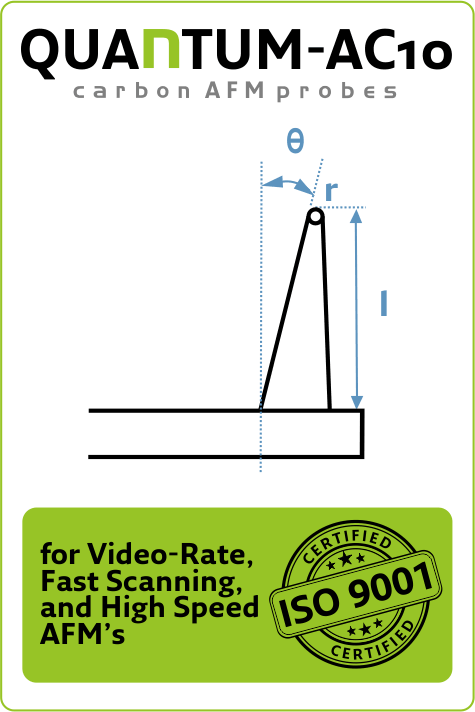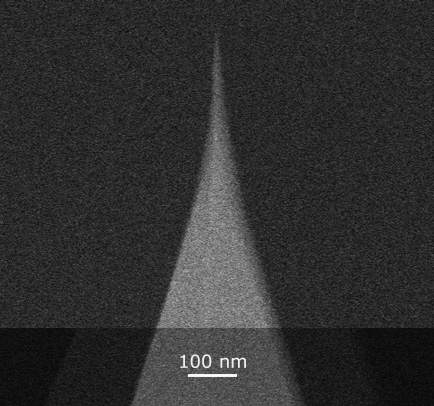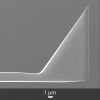

Happy New Lunar Year from NANOSENSORS™Mon Jan 31 2022

The NANOSENSORS screencast on the calibration service for AFM cantilevers has just reached the 1500 views mark.Sat Jan 22 2022
Accurately determined AFM cantilever properties are very important for quantitative force measurements. Force constant and resonance frequency are determined either by thermal tune, the Sader- or the dimensional method, respectively. Usually, the thermal tune method delivers the most precise values, but suffers from the fact that the AFM tip has to get in contact with the surface to calibrate the photo-detector sensitivity. This procedure may damage or break the AFM tip
Read more...


MikroMasch® AFM Probes used in a recent studyFri Jan 21 2022


Arrow AFM probes screencast passes 500 views markWed Jan 05 2022
The screencast about NanoWorld Arrow Silicon AFM probes held byNanoWorld AG CEO Manfred Detterbeck has just passed the 500 views mark. Congratulations Manfred!
NanoWorld Arrow™ AFM probes are designed for easy AFM tip positioning and high resolution AFM imaging and are very popular with AFM users due the highly symetric scans that are possible with these AFM probes because of their special tip shape. They fit to almost all well-known commercial SPMs (Scanning Probe Microscopes) and AFMs (Atomic Force Microscopes).


‘Live your life as an Exclamation rather than an Explanation!’Mon Dec 27 2021
‘Live your life as an Exclamation rather than an Explanation!’ Happy 379th birthday, Sir Isaac Newton!


Season’s Greetings from the whole NanoWorld® AFM probes team!Sun Dec 26 2021


Happy New Year! from MikroMasch®Sat Dec 25 2021


Season’s Greetings from NANOSENSORS AFM probesMon Dec 20 2021
There is a snowman in the park! This is a sure sign that it is again time to wish all users of our AFM probes Happy Holidays!
Take care of yourselves. We are looking forward to a new year together with you.


Max Born won the 1954 Nobel Prize in PhysicsSat Dec 11 2021


The Nobel Prize in Physics 1986Fri Dec 10 2021


Today we remember the late Prof. Calvin QuateTue Dec 07 2021
Today we remember the late Prof. Calvin Quate, co-inventor of the Atomic Force Microscope, who was born on this date in 1923. Binnig, Quate and Gerber constructed the first AFM in 1986. The three scientists received the Kavli Prize in 2016 in recognition of their invention.


NanoAndMore USA booth no 609 at Materials Research Society MRS Fall Meeting & Exhibit 2021Fri Dec 03 2021


QUANTUM-AC10: Extremely Low Wear for Super-Fast AFM’sThu Dec 02 2021
Green Line product highlight:
- Consistent Sharpness
Tip radius 6-7 nm guaranteed. For reliable scanning performance and unmatched tip to tip repeatability - Controlled orientation
Tilt compensation within ±1° ensuring tip-sample perpendicularity for your specific AFM model - Scan location finder aid
Tip position mark on cantilever backside - Consistent Tuning
1.2 MHz rectangular quartz cantilevers (> 1.1 MHz guaranteed) - Diamond-like hardness and durability
Exceptional wear resistance guarantees negligible tip shape changes during high-speed scanning for consistent performance
https://www.nanotools.com/blog/quantum-ac10-extremely-low-wear-for-super-fast-afms.html
#AFM #metrology #topography #microscopy #nanotechnology


@NanoAndMore USA booth no 609 is all set up and ready to welcome youThu Dec 02 2021


Materials Research Society MRS Fall Meeting & Exhibit 2021Thu Dec 02 2021
It’s the last day at Materials Research Society MRS Fall Meeting & Exhibit 2021. NanoAndMore USA booth no. 609 will be ready for your visit from 10:00 am - 1:30 pm today.


Last day at MRS Fall 2021Thu Dec 02 2021


Invitation to visit booth 609 at MRS Fall Exhibit 2021Wed Dec 01 2021


Feel free to pass by NanoAndMore USA booth no. 609Mon Nov 29 2021


It’s the first day of the virtual Materials Research Society 2021 MRS Fall Meeting & ExhibitMon Nov 29 2021


Happy Thanksgiving by NanoWorld®Wed Nov 24 2021

















